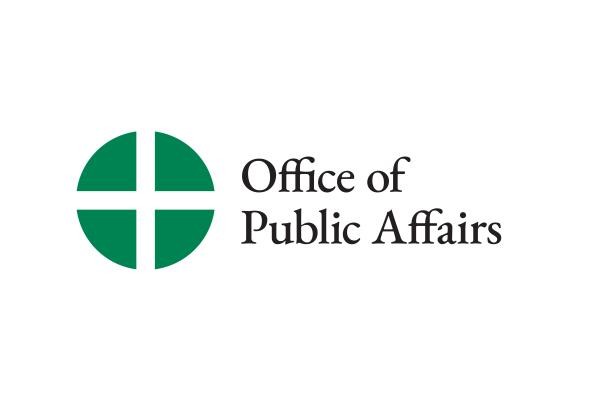Report Finds Catholics Active in Social Media, Room to Grow for Church’s Online Presence
BALTIMORE—Sixty-two percent of adultU.S. Catholics, representing an estimated 36.2 million people, have a profile onFacebook; 58 percent of Catholics age 30 and under share content such aspictures, articles and comments at least once a week on social media; andnearly a third of all surveyed said the
BALTIMORE—Sixty-two percent of adultU.S. Catholics, representing an estimated 36.2 million people, have a profile onFacebook; 58 percent of Catholics age 30 and under share content such aspictures, articles and comments at least once a week on social media; andnearly a third of all surveyed said they would like their pastors and bishopsto blog, according to a newly-released study by the Center for Applied Researchin the Apostolate (CARA) at Georgetown University.
"Catholic New Media Use in theUnited States, 2012" surveyed 1,047 self-identified Catholics from September10-18. The study was released November 11 at "An Encounter With Social Media:Bishops and Bloggers Dialogue," an event sponsored by the Department ofCommunications of the U.S. Conference of Catholic Bishops (USCCB) inconjunction with the U.S. bishops annual Fall General Assembly in Baltimore.
"The CARA report suggests manyopportunities for the Church to engage with those who live on the 'DigitalContinent,' as Pope Benedict XVI describes this new culture of communications,"said Bishop John Wester of Salt Lake City, chairman of the USCCB Committee onCommunications. "We can approach this as missionaries, eager to find Godalready present among the inhabitants of this world and to engage them,especially young people, in meaningful dialogue about morals and values in thisnew public square."
"In this context, the role of thelaity becomes ever more central," said Archbishop Claudio Celli, president ofthe Pontifical Council for Social Communications, in a message to the bishopsand bloggers gathered in Baltimore. "The 'voices' of the many Catholics who arepresent in blogs, social networks and other digital forums are reaching peoplewho might not otherwise encounter the message of Jesus."
According to the CARA study, 37percent of Catholics born before 1943 have a profile on Facebook, and that numberclimbs to 82 percent among Catholics born since 1982. Twenty-four percent ofCatholics 30 and under use Twitter, 15 percent are on LinkedIn, and 13 percentuse Instagram.
Respondents divided roughly intothirds between those who identify as Catholic in their online profiles, thosewho do not identify themselves and those who do not have any online profiles.Nearly half (47 percent) of those using social media reported visiting the siteat least once a day, and slightly fewer (45 percent) share content at leastonce a week or more.
Nineteen percent of Catholics 30 andunder reported sharing content on social media at least once a day. Women weremore likely than men to post daily (17 percent to 9 percent), and the mostpopular social networking sites for daily posters were Tumblr (50 percent),Instagram (44 percent), and Twitter (34 percent).
Two-thirds of adult Catholics (68percent) indicate that they visit YouTube. That number rises to 84 percentamong Catholics age 30 and under. According to the report, the fact that 43percent of Catholics born before 1943 still visit YouTube represents thepopularity of the site, which ranks only behind Google in online traffic.Respondents who took the survey in Spanish were just as likely to visit YouTubeas those who took the survey in English. Only 6 percent of respondents saidthey visited YouTube to view religious content. This rose to 17 percent amongweekly Mass attendees.
Eight percent of adult Catholics whoregularly use a digital device indicate that they use at least oneCatholic-related application on these. Five percent (or 2.9 million people)read or follow blogs on the Catholic Church, faith, or spirituality. Amongweekly Mass attenders, 13 percent read or follow blogs on the Church. Of thosewho read these blogs, 72 percent said they do so to learn more about theChurch's teachings and their faith, and 71 percent said they do so to stay upto date on news of the Church.
The top three concerns cited byrespondents for the Church's presence online were the lack of a system for theChurch to validate sites and content as authentically Catholic (45 percent),the lack of civil tone in conversations happening on the internet (43 percent),and the reluctance by Catholic Church leaders to use the Internet (42 percent).About a third agreed that they want their pastor (33 percent) and their bishop(31 percent) to blog. A third of adult Catholics represent about 19 millionindividuals.
The adult Catholic population isnearly evenly divided by those aware of the Church's presence online and thosewho are not aware of this. About a quarter (24 percent) indicated said theChurch is "somewhat" or "very" visible, while another quarter said it is "onlya little" or "not very" visible (23 percent). More than half (53 percent) wereunaware of any significant presence.
The Catholic website most oftenvisited regularly by self-identified adult Catholics is their parish website.Currently about one in 10 (9 percent) say they visit this once a month or moreoften. This is equivalent to 5.3 million individuals.
Eighty-four percent of respondentstook the survey in English; 16 percent took it in Spanish. Every percentagepoint of the total sample represents approximately 583,000 adult Catholics. TheUSCCB Department of Communications commissioned the study with assistance fromthe Catholic Communication Campaign.
The full text of the report isavailable online: www.usccb.org/about/communications/catholics-use-of-new-media-2012-cara-report.cfm
---
Keywords: Catholics, social media, Internet, Facebook,Twitter, blogs, blogging, apps, Church, presence, bishops, YouTube, CARA,Center for Applied Research in the Apostolate, website, demographics, BishopJohn Wester, Archbishop Claudio Celli
# # # # #
12-191
Sec,DD,DioNewspaper,CNS,RNS,Crux,PRNewswire


